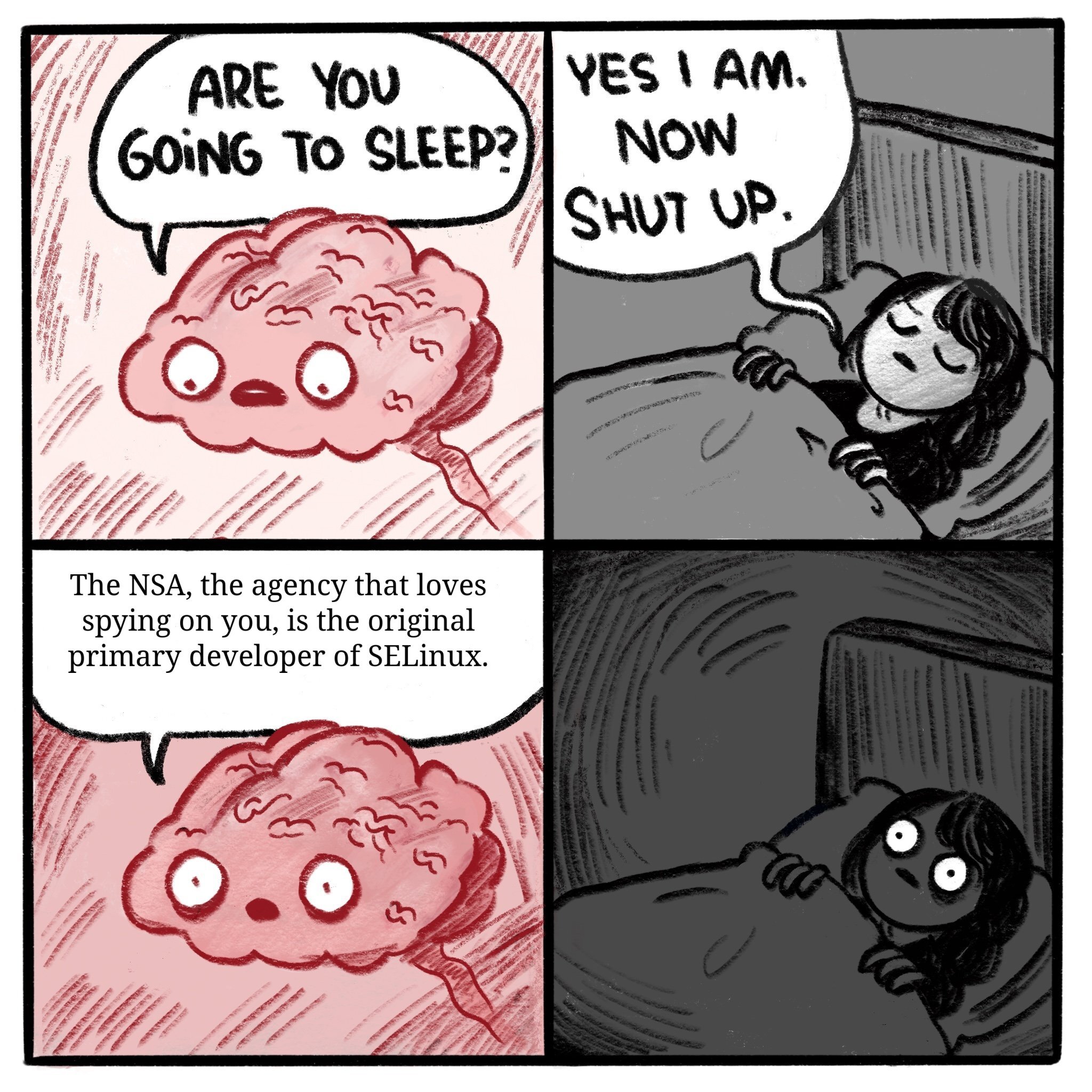this post was submitted on 07 Jan 2025
625 points (96.7% liked)
linuxmemes
22871 readers
617 users here now
Hint: :q!
Sister communities:
Community rules (click to expand)
1. Follow the site-wide rules
- Instance-wide TOS: https://legal.lemmy.world/tos/
- Lemmy code of conduct: https://join-lemmy.org/docs/code_of_conduct.html
2. Be civil
- Understand the difference between a joke and an insult.
- Do not harrass or attack users for any reason. This includes using blanket terms, like "every user of thing".
- Don't get baited into back-and-forth insults. We are not animals.
- Leave remarks of "peasantry" to the PCMR community. If you dislike an OS/service/application, attack the thing you dislike, not the individuals who use it. Some people may not have a choice.
- Bigotry will not be tolerated.
- These rules are somewhat loosened when the subject is a public figure. Still, do not attack their person or incite harrassment.
3. Post Linux-related content
- Including Unix and BSD.
- Non-Linux content is acceptable as long as it makes a reference to Linux. For example, the poorly made mockery of
sudoin Windows. - No porn. Even if you watch it on a Linux machine.
4. No recent reposts
- Everybody uses Arch btw, can't quit Vim, <loves/tolerates/hates> systemd, and wants to interject for a moment. You can stop now.
5. 🇬🇧 Language/язык/Sprache
- This is primarily an English-speaking community. 🇬🇧🇦🇺🇺🇸
- Comments written in other languages are allowed.
- The substance of a post should be comprehensible for people who only speak English.
- Titles and post bodies written in other languages will be allowed, but only as long as the above rule is observed.
Please report posts and comments that break these rules!
Important: never execute code or follow advice that you don't understand or can't verify, especially here. The word of the day is credibility. This is a meme community -- even the most helpful comments might just be shitposts that can damage your system. Be aware, be smart, don't remove France.
founded 2 years ago
MODERATORS
you are viewing a single comment's thread
view the rest of the comments
view the rest of the comments

That's the trubble with the NSA. They want to spy on people, but they also need to protect American companies from foreign spies. When you use their stuff, it's hard to be sure which part of the NSA was involved, or if both were in some way.
The NSA has a fairly specific pattern of behavior. They work in the shadows not in the open. If they target things with low visibility so it is hard to trace. Backdooring SELinux would be uncharacteristic and silly. They target things like hardware supply chains and ISPs. There operations aren't even that covert as they work with companies.
The specific example I'm thinking of is DES. They messed with the S-boxes, and nobody at the time knew why. The assumption was that they weakened them.
However, some years later, cryptographers working in public developed differential cryptanalysis to break ciphers. Turns out, those changed S-boxes made it difficult to apply differential cryptanalysis. So it appears they actually made it stronger.
But then there's this other wrinkle. They limited the key size to 56-bits, which even at the time was known to be too small. Computers would eventually catch up to that. Nation states would be able to break it, and eventually, well funded corporations would be able to break it. That time came in the 90s.
It appears they went both directions with that one. They gave themselves a window where they would be able to break it when few others could, including anything they had stored away over the decades.
Honestly I think it ultimately comes down to the size of the organization. Chances are the right hand doesn't know what the left hand is doing.
I do like the direction the US is heading it. Some top brass have finally caught on that you can't limit access to back doors.
They were a bit too public with "Dual_EC_DRBG", to the point where everybody just assumed it had a backdoor and avoided it, the NSA ended up having to pay people to use it.